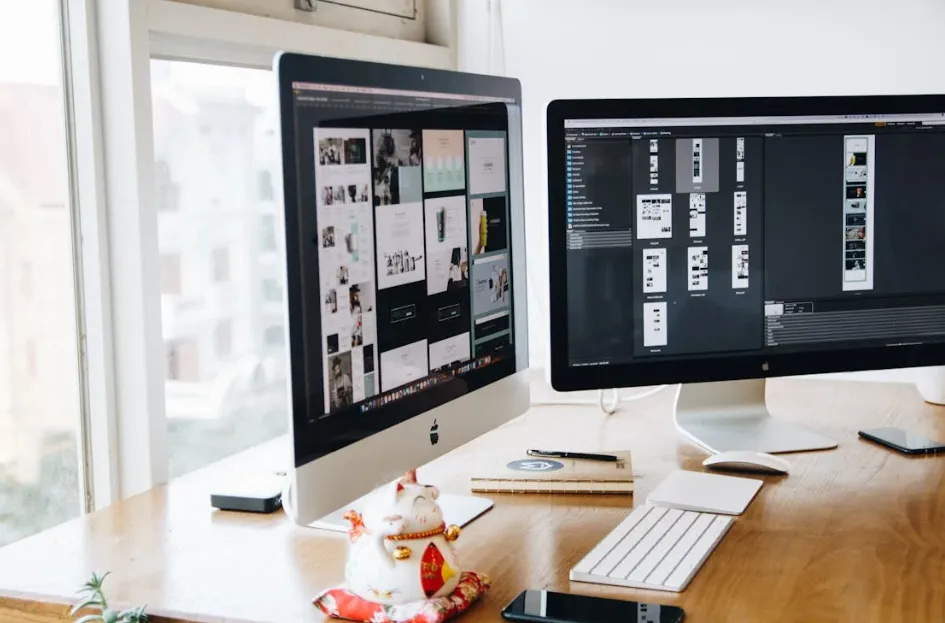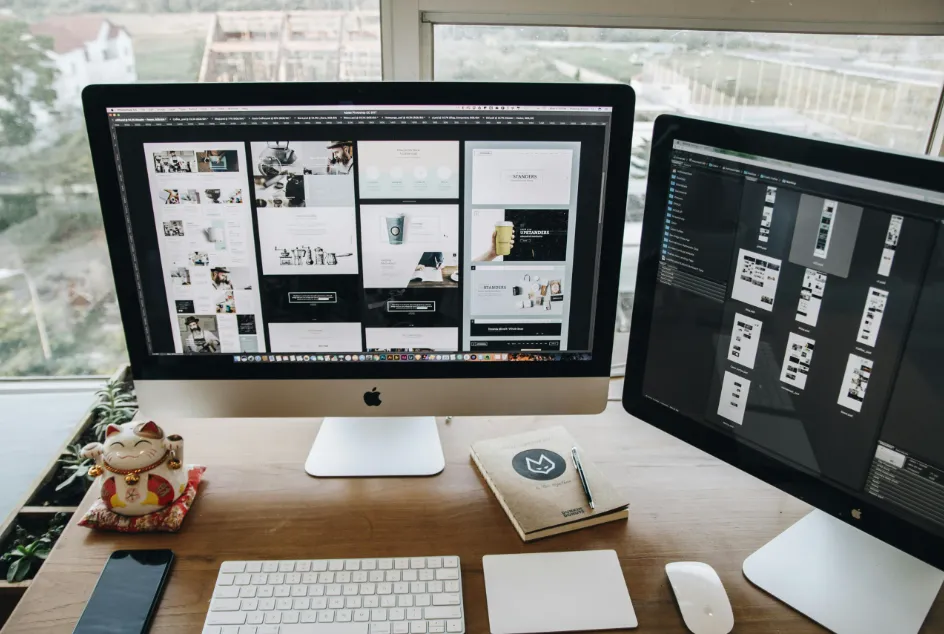AI for Web Design: Revolutionizing the Future of Digital Aesthetics and Functionality
In today’s fast-paced digital world, staying ahead of the curve in web design is paramount for businesses, brands, and creators. With the rise of Artificial Intelligence (AI), web design has entered a transformative phase, enhancing the speed, efficiency, and creativity behind the development of visually stunning and functional websites.
From AI-driven tools that automate routine tasks to advanced algorithms that assist in creating personalized user experiences, AI for web design is reshaping the industry in profound ways. If you want to know more about web design, visit mightymegaphone.com and get the information.
In this article, we will explore how AI is revolutionizing web design, the benefits brings to designers and businesses alike, and some of the most innovative tools and trends powered by AI in the web design space.
The Role of AI in Web Design

AI in web design refers to the use of artificial intelligence technologies to automate and enhance various aspects of the design process. This can range from simple tasks like layout creation to more advanced applications like content generation, personalization, and user experience (UX) optimization.
By integrating machine learning, natural language processing, and data analysis, AI is helping designers create websites that are not only visually appealing but also optimized for user engagement and conversion.
Automating Routine Design Tasks
One of the most significant ways AI is transforming web design is through automation. Many repetitive tasks, which once consumed considerable time and effort, can now be handled by AI tools.
For example, AI can automatically generate color schemes, layouts, and typography choices based on industry standards and best practices. It can even analyze user behavior data to suggest improvements in design elements.
This automation allows designers to focus more on creativity and strategy, rather than getting bogged down by mundane tasks. Tools like Wix ADI (Artificial Design Intelligence) and Bookmark’s AiDA are prime examples of AI-powered platforms that can create fully-functional websites in a matter of minutes based on user input, such as business type, preferred design style, and content.
Using AI for the web design, helps the designer working more effectively and less in time. So you can finish the job faster but still in touch with your style of creativity. But you must also keep on eye with the using of AI to make sure its job done correctly.
Personalized User Experiences
Personalization is another area where AI is making a massive impact. By using data such as user behavior, location, browsing history, and demographic information, AI can help designers create websites that adapt to individual user needs.
AI-driven personalization enables the website to adjust elements like content, layout, and even offers based on the user’s preferences, ultimately improving user engagement and conversion rates.
For instance, e-commerce websites can use AI to display personalized product recommendations based on a visitor’s browsing habits, while news websites can tailor content to reflect the reader’s interests.
This level of customization not only enhances user experience but also boosts overall website performance. In the end it will brings new experiences to the user experience with the web design you created.
Enhancing UX/UI Design with AI
User experience (UX) and user interface (UI) design are at the heart of successful web development. AI is playing a pivotal role in improving both by providing insights into how users interact with a site and suggesting design changes that can enhance usability.
AI-powered tools like Hotjar and Crazy Egg offer heatmaps and session replays that show where users click, scroll, and spend the most time on a webpage. This valuable data helps designers optimize layouts, eliminate friction points, and create more intuitive user journeys.
Furthermore, AI can assist with accessibility, ensuring that websites are inclusive for all users, including those with disabilities. Tools like AI-powered screen readers or real-time text analysis can automatically adjust design elements to be more accessible, making the web a better place for everyone.
Key Benefits of Using AI for Web Design

Integrating AI into web design offers numerous benefits that enhance both the design process and the end-user experience. Here are some of the most significant advantages:
Faster Design and Development
With AI tools taking over repetitive tasks and streamlining the design process, websites can be created much faster. What used to take weeks or even months can now be done in days, allowing businesses to launch their digital presence more quickly and efficiently.
This speed also extends to updates and maintenance, as AI can predict when design adjustments are necessary based on user feedback and behavioral trends. So you can save your time and work more efficiently.
Improved Decision Making
AI helps web designers make data-driven decisions by analyzing vast amounts of data about how users interact with a website. By understanding visitor behavior and preferences, designers can make informed adjustments that directly impact site performance.
Whether it’s altering a call-to-action button or redesigning the site navigation, AI tools provide actionable insights that lead to better decisions and more effective design outcomes.
Enhanced Creativity
Contrary to the misconception that AI might stifle creativity, it actually enhances it by providing new ideas, suggestions, and inspiration for design. AI tools can recommend color palettes, suggest layouts, or even generate content for blogs and landing pages.
For instance, tools like Adobe Sensei use AI to help designers refine their work by offering intelligent suggestions and automating tedious aspects of the creative process, allowing them to focus on more innovative and imaginative tasks.
Scalability
AI tools allow designers to scale their work effortlessly. Once a design is completed, AI can help automate content creation, SEO optimization, and even marketing strategies, allowing websites to grow and evolve over time without requiring continuous manual input.
This scalability is especially beneficial for businesses that need to adapt quickly to changing trends or expanding product offerings.
Innovative AI Tools for Web Design

Numerous AI-powered tools are currently available to help designers create websites that are aesthetically pleasing, functional, and optimized for performance. Below are some of the most innovative and widely used tools in the industry:
Wix ADI (Artificial Design Intelligence)
Wix ADI is an AI-powered website builder that can automatically create a fully functional website based on user input. The AI analyzes the user’s needs and preferences, then generates a website design with relevant content and a personalized layout. The platform allows for easy customization, enabling designers to fine-tune the generated site to meet specific needs.
Bookmark AiDA
Bookmark’s AiDA (Artificial intelligence Design Assistant) is another AI-powered website builder that creates websites in a matter of minutes. AiDA offers templates that are automatically customized based on user input, including business type, design preferences, and functionality requirements. This tool allows even non-designers to create a professional-looking website in no time.
Adobe Sensei
Adobe Sensei is an AI and machine learning platform that integrates with Adobe’s suite of creative tools, such as Photoshop, Illustrator, and Adobe XD. It offers intelligent automation features, such as auto-tagging, content-aware editing, and personalized design suggestions. Designers can leverage Adobe Sensei’s AI to enhance their creative process and improve their workflow.
The Grid
The Grid is an AI-based web design platform that uses machine learning to design websites automatically. The tool adapts in real time to user input, making design decisions based on the content provided. It’s an innovative solution for designers looking for a more hands-off approach to website creation.
The Future of AI in Web Design
The integration of AI in web design is just the beginning, and the potential for innovation is vast. As AI technologies continue to evolve, we can expect even more sophisticated tools that will push the boundaries of web design. From hyper-personalized web experiences to advanced predictive design algorithms, the future of AI for web design promises to be both exciting and transformative.
Conclusion
AI is undeniably reshaping the world of web design. By automating mundane tasks, personalizing user experiences, and enhancing both creativity and decision-making, AI is empowering designers and businesses to create better, more effective websites.
The tools and techniques available today offer unprecedented opportunities for faster development, better user engagement, and more innovative design solutions. As the technology continues to improve, we can only anticipate even more advancements in how AI will shape the web design landscape.
That’s articles about AI for web design you should know. After reading this article hopefully you will find more information about Artificial Intelligence and its usage ini various field especially in web design.



